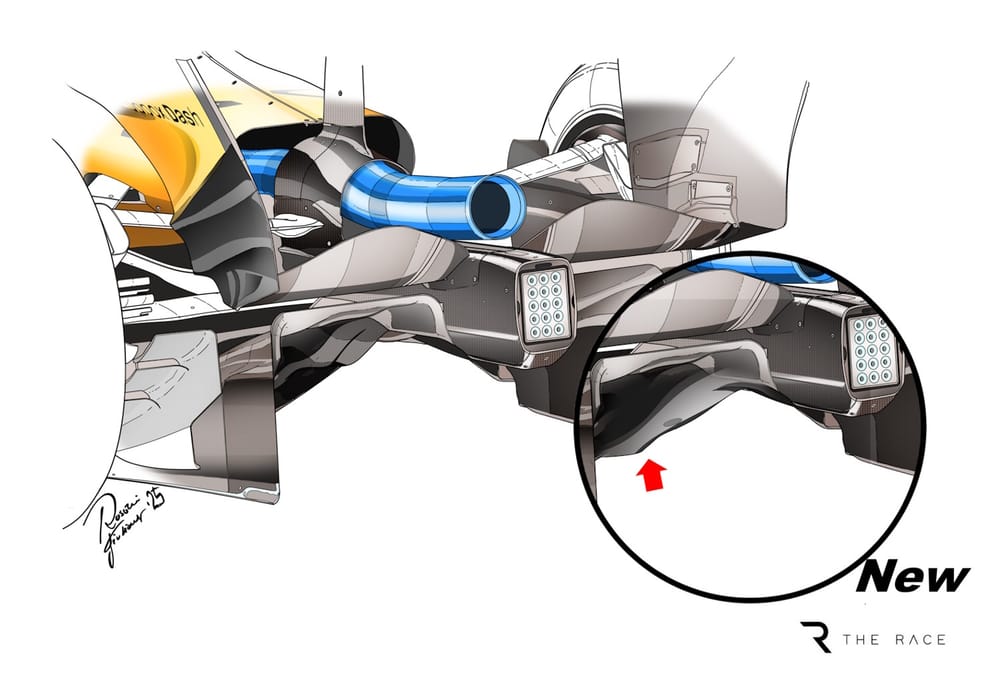McLaren opted not to race its first Formula 1 floor upgrade of the season at the Saudi Arabian Grand Prix despite testing it in-weekend.
The reigning constructors' champion team declared two new upgrades last week in Saudi Arabia - a reshaped diffuser to get more downforce, and new rear brake duct winglet arrangement for better aerodynamic efficiency.
McLaren ran the new floor on Oscar Piastri's car in FP1, before Lando Norris used it in FP2, but for the rest of the weekend McLaren opted to have both cars on the specification it has had in the opening races.
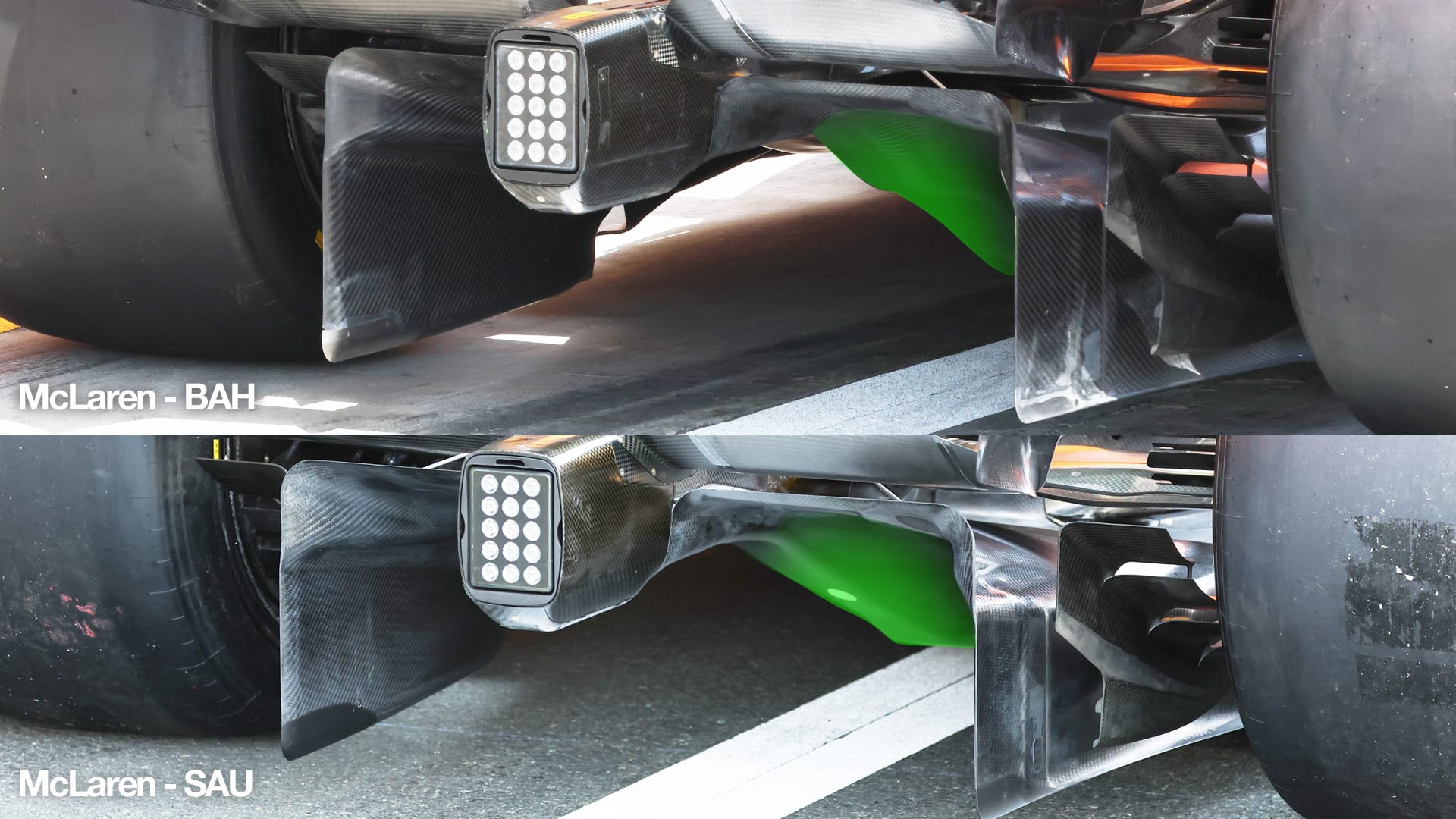
This emerged after Norris crashed in qualifying and team boss Andrea Stella said there was no concern about spares because McLaren had stuck with older specification components. He did not go into detail why, only describing the new parts as test items.
"We actually didn't use it," he said. "There's nothing in the car that is of a new specification.
"Some of the things we declared, they were test items. We tested them in practice, we didn't adopt them."
This short break before the Miami GP now affords McLaren more time to interrogate the data from running the parts on track before potentially using them properly at the same place it started its charge last season.
While McLaren didn't race the new diffuser in Saudi Arabia, it did finally commit to a full weekend with its low-drag rear wing.
This was tested in Bahrain in pre-season, and appeared on the car in Friday practice at the Australia season opener (shown below).
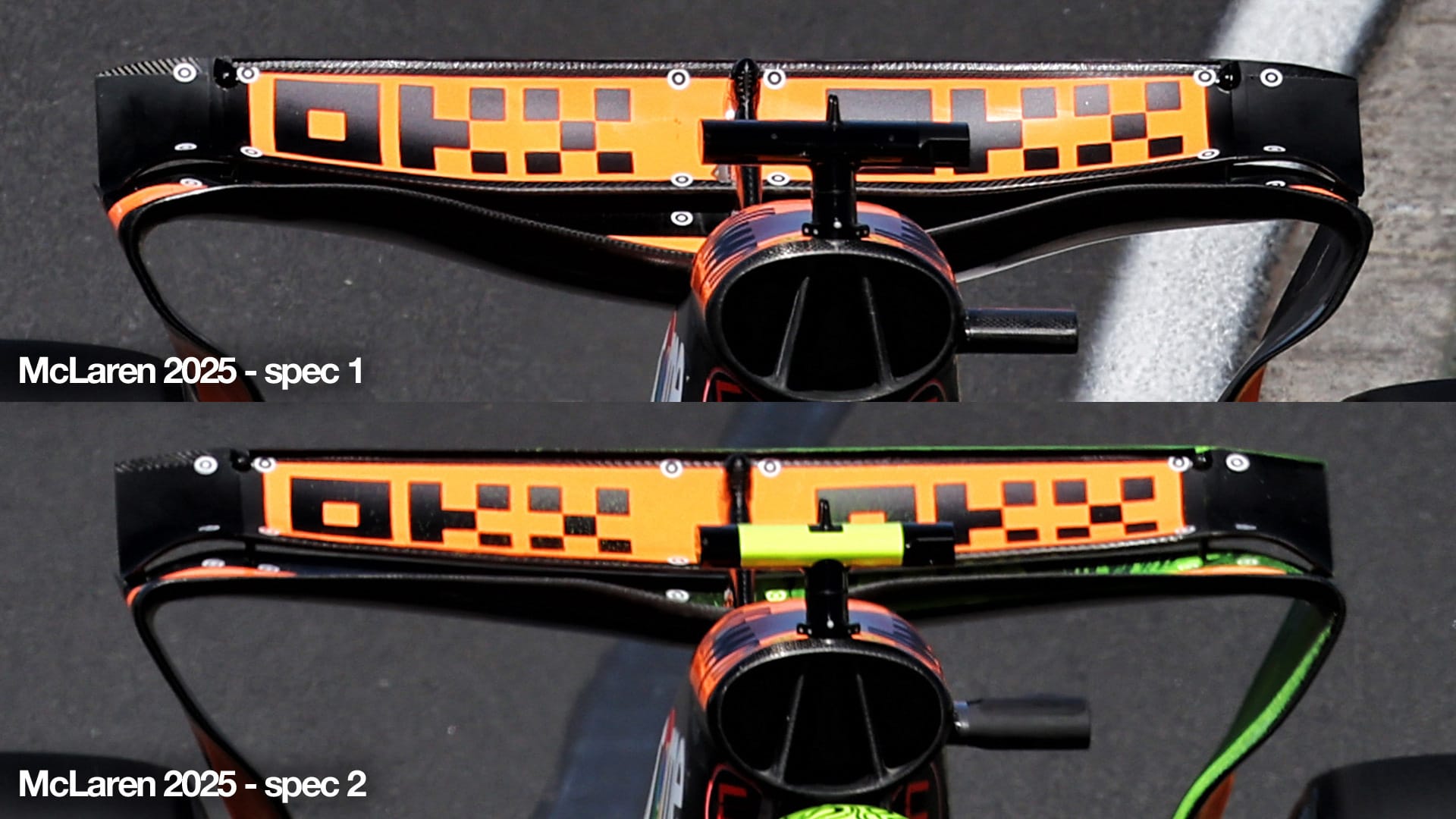
But Saudi Arabia was the first time it stayed in use for the entire event - and having proven its use and its legality, given all the talk about rear wing manipulation and beefed-up FIA tests since this rear wing was first used (but not raced), it will be deployed again where appropriate.
That continues a strategy so far in 2025 of introducing minor, circuit-specific tweaks. So far McLaren has focused on things like brake duct winglets and trialling different beam wing/rear wing configurations.
This is why the first part in a more sensitive area, the floor, was so anticipated and why a decision needed to be made over what to do with it - even though it was nothing like the scale of floor upgrade Ferrari had introduced in Bahrain, for example.
'Definitely we need upgrades'
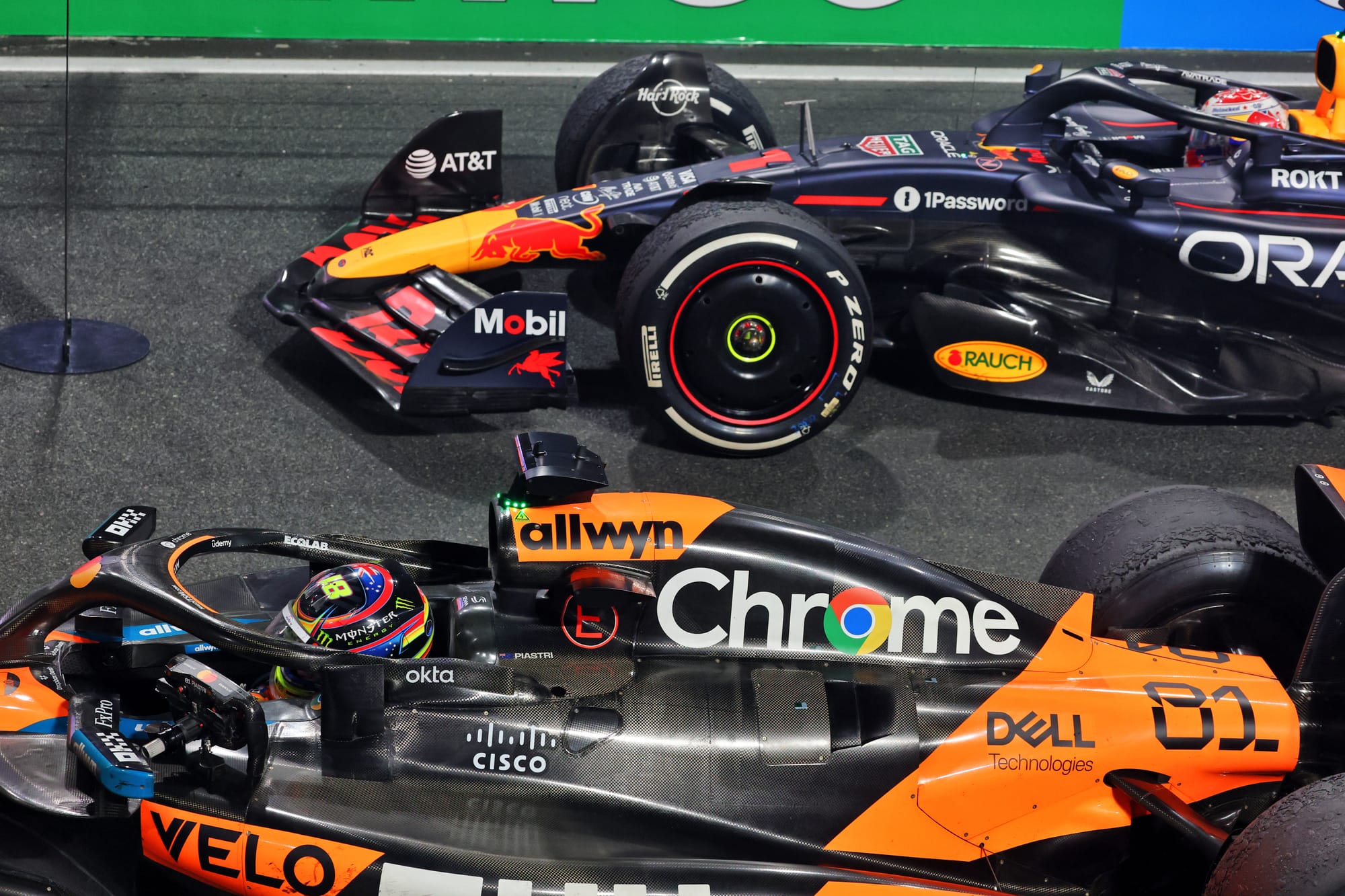
The fact the Saudi weekend was run without the upgrade creates a slightly interesting unknown given McLaren - especially Norris - looked so strong on Friday in Jeddah but had a sterner challenge from Max Verstappen's Red Bull on Sunday when its usual tyre management advantage seemed negligible if not non-existent.
However, it is understood that McLaren considers the change to the diffuser to be a refinement rather than a big update.
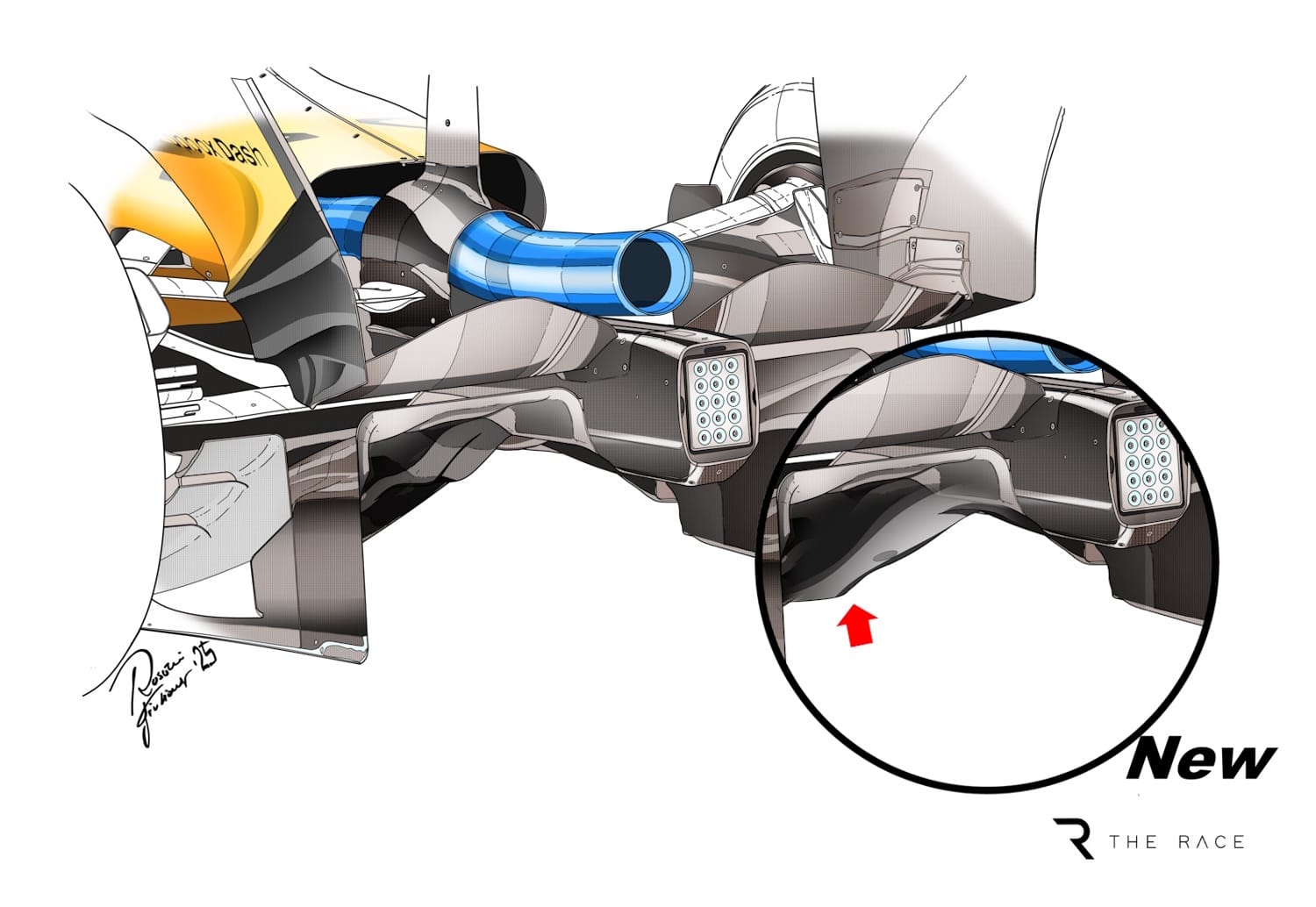
And if it had been a transformative part of McLaren's performance as it evaluated it across both cars on Friday, it would have stayed on for the rest of the weekend.
Still, there is an acceptance from the team that it cannot assume its existing package can be relied upon indefinitely. Especially as a key advantage seemed to be negated in Jeddah.
"This is one of the few things that I actually admitted, we seem to have a good capability of interacting with the tyres in a gentle way, and we could produce a strong pace at the end of the stint," Stella said of McLaren's usual trend in 2025.
"But if we look at the first stint [in Saudi Arabia], Verstappen had better pace at the end of stint one - then [Charles] Leclerc, I think he took it even to another level," said Stella.
"This was a little bit unexpected, because we thought that we could, once again here, utilise this strong feature of the car.
"But I think it just shows once again, that not only from a pace point of view, but we saw from a tyre exploitation point of view, everything's so tight and close that there could be small variabilities associated with the Tarmac characteristic, the way the tyres are being used, how the tyres are driven.
"And this changes the balance, it changes the pecking order.
"So I think for us, the message is very clear, the margins are tight, and we need to execute race weekends in a perfect way if we want to continue this strong start of the season."
There was at least a feeling that some of McLaren's true pace was hidden by Piastri's first stint being spent behind Verstappen, and Norris being out of position after his qualifying crash.
Layer on an unused upgrade to that, and the fact the Jeddah track layout and surface was much friendlier to Red Bull, McLaren's immediate rival, and a logical conclusion is that the MCL39 was running in a less-than-theoretically-optimum form.
And as Stella said that "definitely we need to bring upgrades", we should expect this, or something, to be on the car in Miami.
Why McLaren holds off on upgrades
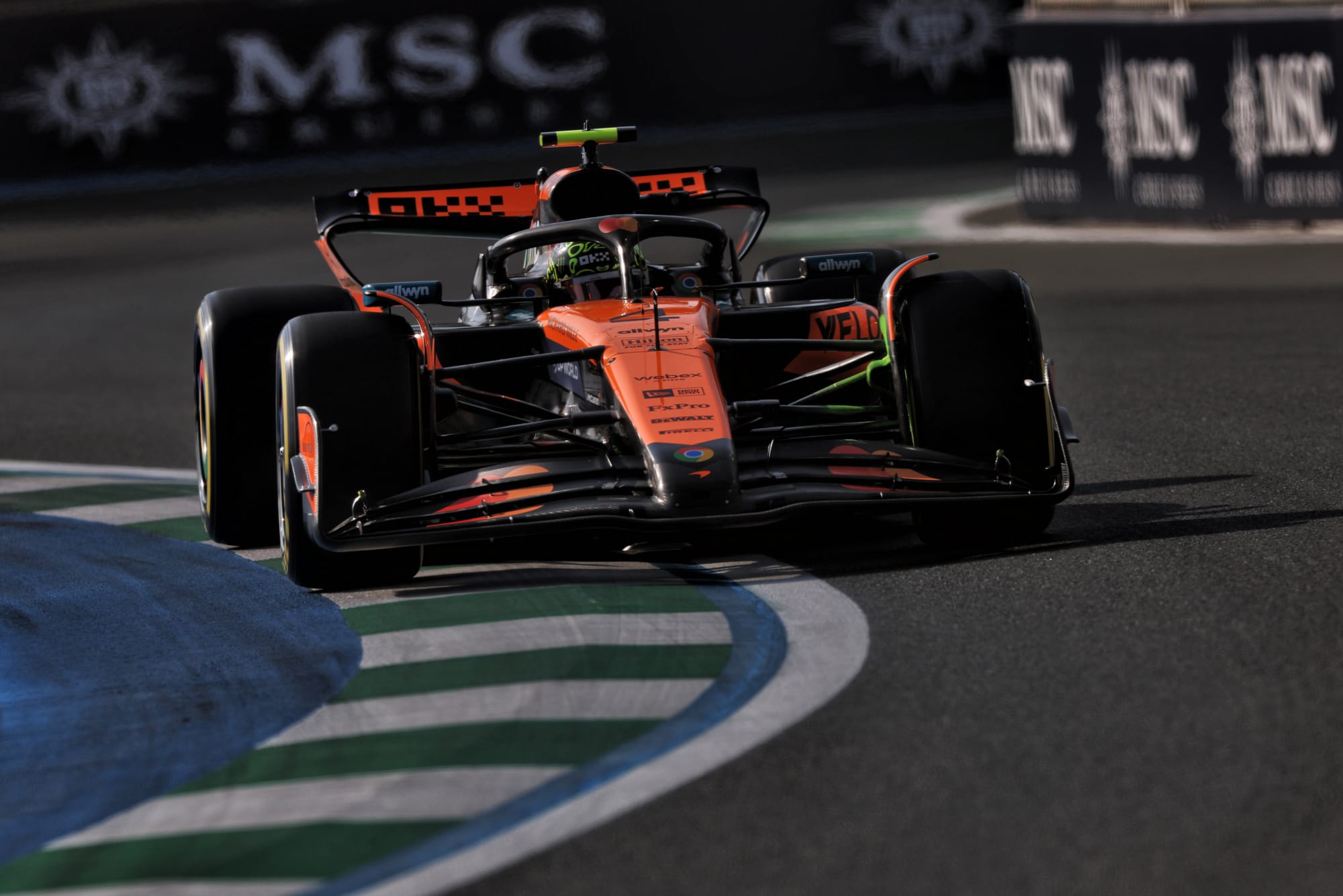
As McLaren's MCL39 is already the benchmark car in 2025, Miami will not be the scene of the same sort of dramatic swing in its favour as 12 months ago.
The upgrade is nowhere near to the same scale, even if the same underlying strategy of holding off on its upgrades until it is absolutely convinced by them has continued.
Previously, McLaren's first upgrades of the year have been significant overhauls. In 2023, when its rise to the front began, the packages were designed to overhaul the existing car concept. Last season, the Miami one effectively turned the car into what McLaren had hoped to start the season with.
That influenced how McLaren introduced the upgrades, putting them on Norris's car and delaying a full set of new parts for Piastri. This year the developments are less grand, and so that approach is a little different.
Waiting to deploy on both cars fits better with the fact the two drivers are fighting each other for the championship, so there is no element of favouritism.
As the upgrade was ready for both cars in Jeddah, there was inevitably the question over why it was not persevered with.
Holding off on racing an upgrade until McLaren is convinced by it has been a tenet of Stella's time as team boss and the technical structure he implemented early in his leadership.
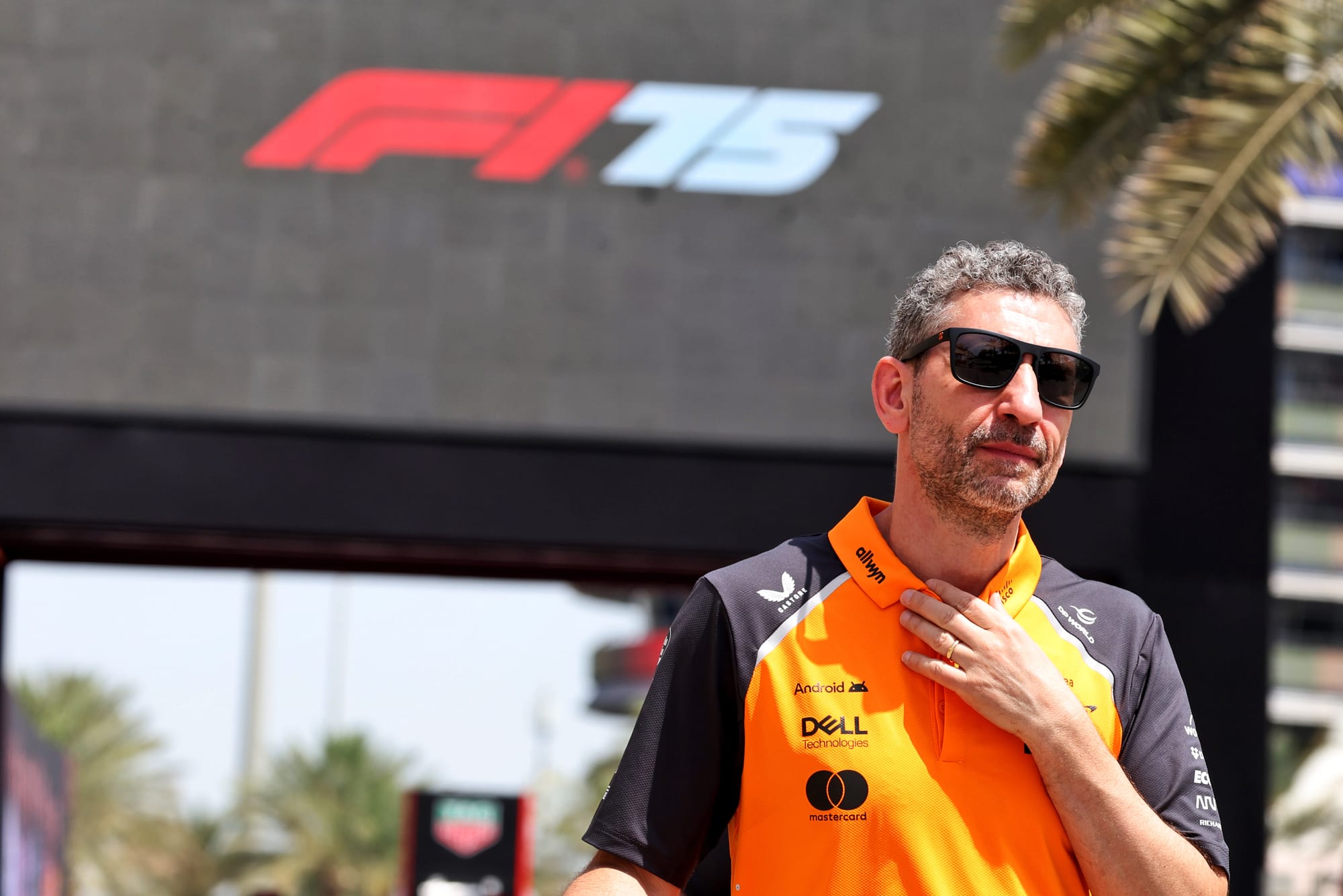
This usually applied to committing to producing an upgrade and taking it to the track, rather than going through with production and trialling it in practice.
But that was when the upgrades in process were part of a bigger package. So it was more important to be sure everything worked together. This time it is understood to be more a case of waiting to analyse the performance of the new diffuser more thoroughly so that the set-up can be optimised.
McLaren knows its car is fast enough to fight for poles and victories already, so does not need to rush something smaller onto the car, especially at a high-speed track with demands that make consistent floor performance crucial.

